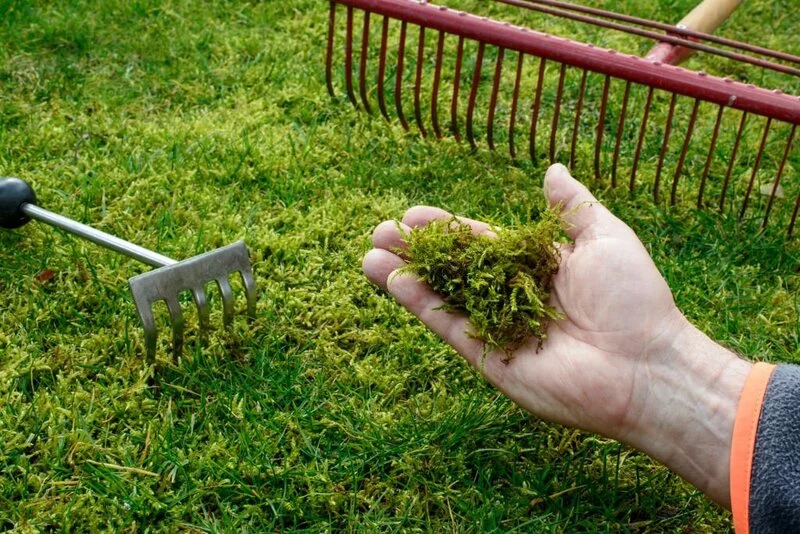Are you on the hunt for that magic ingredient to transform your garden into a thriving, lush green haven? The answer might be simpler than you think – peat moss. This unassuming, fluffy material might not look like much, but its impact on your garden can be truly astounding. As gardeners, our mission is to create the ideal environment for our plants to flourish. And peat moss, with its unique properties, can play a key role in this quest. So, whether you’re a gardening guru or a budding green thumb, let’s dive into the wonderful world of peat moss.
- Lightens heavy potting mixes and native soil
- Enriched with Miracle-Gro Plant Food
- Helps promote strong root development
- Unique water-holding capabilities help plants require less frequent watering
- This bundle includes two 8 qt. bags of Miracle-Gro Sphagnum Peat Moss
Peat Moss
Peat moss, also known as sphagnum moss, is a type of moss that grows abundantly in marshy, damp areas known as peatlands or bogs. But why is it so popular among gardeners? The secret lies in its structure and composition. Peat moss has a remarkable ability to retain water – it can hold up to 20 times its weight in moisture! Plus, its natural acidity can help balance the pH levels in your soil. Moreover, peat moss is lightweight, easy to work with, and acts as a great soil amendment, improving its structure and making it more hospitable for plant roots.
When to Use Peat Moss
Knowing when to use peat moss can make all the difference in your gardening experience. Peat moss is particularly beneficial when you’re dealing with sandy or clay soil. In sandy soil, it helps retain much-needed moisture and nutrients, while in clay soil, it aids in breaking up the dense structure, improving aeration and drainage. If you’re planting acid-loving plants like azaleas, rhododendrons, or blueberries, adding peat moss can provide the perfect acidic environment for them to thrive. Similarly, if you’re starting a new lawn or garden bed, or even potting indoor plants, peat moss can be an excellent addition to get things off on the right foot. Now that you have a solid understanding of peat moss, let’s figure out how much of it you actually need.
- 3 Cubic Foot sphagnum peat moss
- Perfect for organic growing
- Maximizes water retention
- Suited for indoor and outdoor horticultural applications
Tools and Materials Needed
Before we get our hands dirty, let’s gather all the necessary tools and materials. To work with peat moss, you’ll need a gardening trowel or spade for small areas, or a rototiller for larger garden beds. Don’t forget your gardening gloves to protect your hands, and a wheelbarrow to transport the peat moss easily. Other materials that you might want to consider are compost or well-rotted manure, as these can work wonderfully in combination with peat moss to enhance your soil’s fertility.
- Heavy Duty Carbon Steel is bend proof and break proof for confident digging in heavy clay or rocky soils
- Depth markers for easy measurement for more consistent planting or transplanting
- ErgoGrip with ergonomic rubber grip handle for comfortable use and better leverage in heavy / rocky soils
- Rust proof, Bend Proof and Break proof indestructible design
- Lifetime Warranty – If for any reason this garden hand shovel doesn’t hold up the way you expect we will replace it for the lifetime of the tool
How to Calculate the Amount of Peat Moss You Need
Calculating the amount of peat moss needed is a simple yet crucial step. First, measure your garden bed or the area where you intend to use the peat moss. This will give you the square footage. For instance, if your garden bed is 10 feet long and 5 feet wide, your square footage is 50 square feet.
Next, understand your soil type and what you want to achieve. Generally, for improving sandy or depleted soil, a 2-inch layer of peat moss is recommended. For heavy clay soil, you may want a 3-inch layer to improve aeration and drainage.
To figure out the volume of peat moss needed, multiply your square footage by the desired thickness (in feet). So, for a 50 square foot bed with a 2-inch layer, you’ll need approximately 8.3 cubic feet of peat moss (50 sq ft * 0.17 ft = 8.3 cubic ft).
How to Apply Peat Moss to Your Garden
Now that we have the calculations done, let’s move on to the fun part – applying peat moss to your garden! Start by moistening the peat moss. Dry peat moss can be difficult to work with and can even blow away. Once it’s moist, spread it evenly over the area you’re working with. Use your spade or rototiller to mix the peat moss into the top 6 to 12 inches of soil. The goal is to fully incorporate the peat moss into your existing soil, creating a well-blended, nutrient-rich environment for your plants. And voila! You’re all done! Your garden is now supercharged with peat moss, ready to support your plants like never before.
Tips and Warnings
Peat moss is indeed a valuable addition to your gardening toolkit, but here are a few tips and warnings to consider:
- Always moisten peat moss before using it. Dry peat moss is dusty and can become airborne, which you should avoid inhaling.
- While peat moss improves soil structure and moisture retention, it doesn’t provide much nutritional value. Consider combining it with compost or a slow-release fertilizer for a balanced soil mix.
- Peat moss is naturally acidic. If your plants prefer neutral or alkaline soil, you’ll need to add garden lime to balance the pH.
- Consider using peat moss responsibly, as it comes from peatlands, which are valuable ecosystems. Where possible, opt for sustainably harvested peat moss or consider alternatives like coir (coconut fiber).
Frequently Asked Questions
Can I use peat moss as a mulch?
Yes, but be aware that it can form a hard crust that prevents water from penetrating if it dries out.
Will peat moss kill my plants?
Not likely, but because it’s acidic, it’s best suited to acid-loving plants unless you adjust the pH.
Is peat moss safe to handle?
Yes, but it’s always a good idea to wear gloves and a mask when handling peat moss, especially when it’s dry, to prevent inhalation of dust.
Conclusion
There you have it! You’ve now unlocked the secrets of using peat moss in your garden. It’s a fantastic tool to improve your soil’s structure, enhance moisture retention, and create the perfect home for your plants’ roots. While it does require a bit of understanding and careful use, the benefits it brings to your garden are absolutely worth it. So why wait? Grab that bag of peat moss and let your garden experience the difference.






